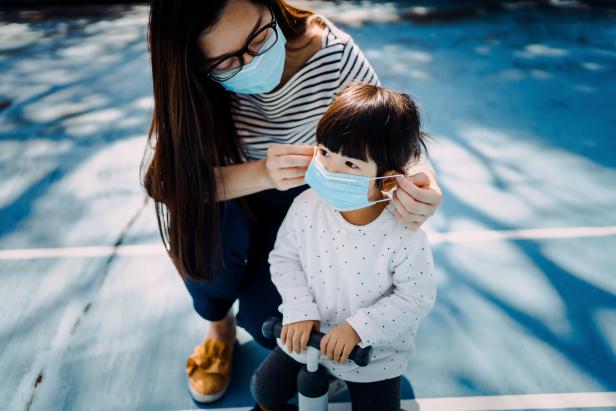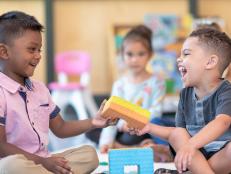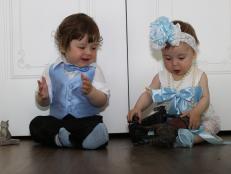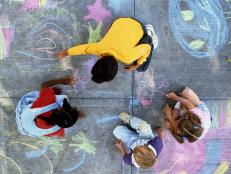How to Make a Face Mask that Won’t Freak Out Your Kids
A few tricks to make your child's mask - and yours - look less intimidating.


d3sign
When you venture outside, you are likely to see people wearing face masks because the Centers for Disease Control and Prevention are that recommending adults and children 2 years and older “wear a cloth face covering their nose and mouth when in the community setting,” to help stop the spread of the coronavirus. While wearing masks and seeing others wear masks is necessary at this time, it can be really scary for kids.
So, to help ease your children into this new phase and make masks look and feel less intimidating, here’s a few things you can do.
Use Kid-Friendly Fabric
If you are making your own masks, choose fabrics that will appeal to your kids. If possible, choose their favorite color or a material that features cartoon characters that your little ones love. The same goes for your own mask. Surgical masks can look scary to a child, but a mask made from colorful material may seem less intimidating.
Turn the Mask into a Costume
Make the mask look like their favorite superhero, animal or character to encourage your child to wear it. If you have old costumes or dress up clothes for imaginary play, recycle them by using the fabric to create a comfy mask and add a cape to transform your kids into a superheroes!
Decorate the Mask
Before they wear their mask, have a crafting session. Break out fabric markers, paint or permanent markers and let your child decorate their mask and your own.
Make it Comfortable
Doctors and nurses who wear masks all day often complain about soreness around their ears. To ensure this doesn’t happen to your child, you can make a few modifications to their mask.
Girls who have longer hair can attach the ear loops of the mask around low pigtails. Or, you can attach buttons onto a fabric headband or baseball cap and hook ear loops around the buttons. If you aren’t handy with a needle and thread, grab large safety pins or hair pins to secure the loops to the headband or cap.
Make a Mask from Something Familiar
Grab a winter scarf, a bandana or even an old t-shirt and follow the guidelines from the CDC on making a face covering. Using familiar items can help your child become more at ease.















